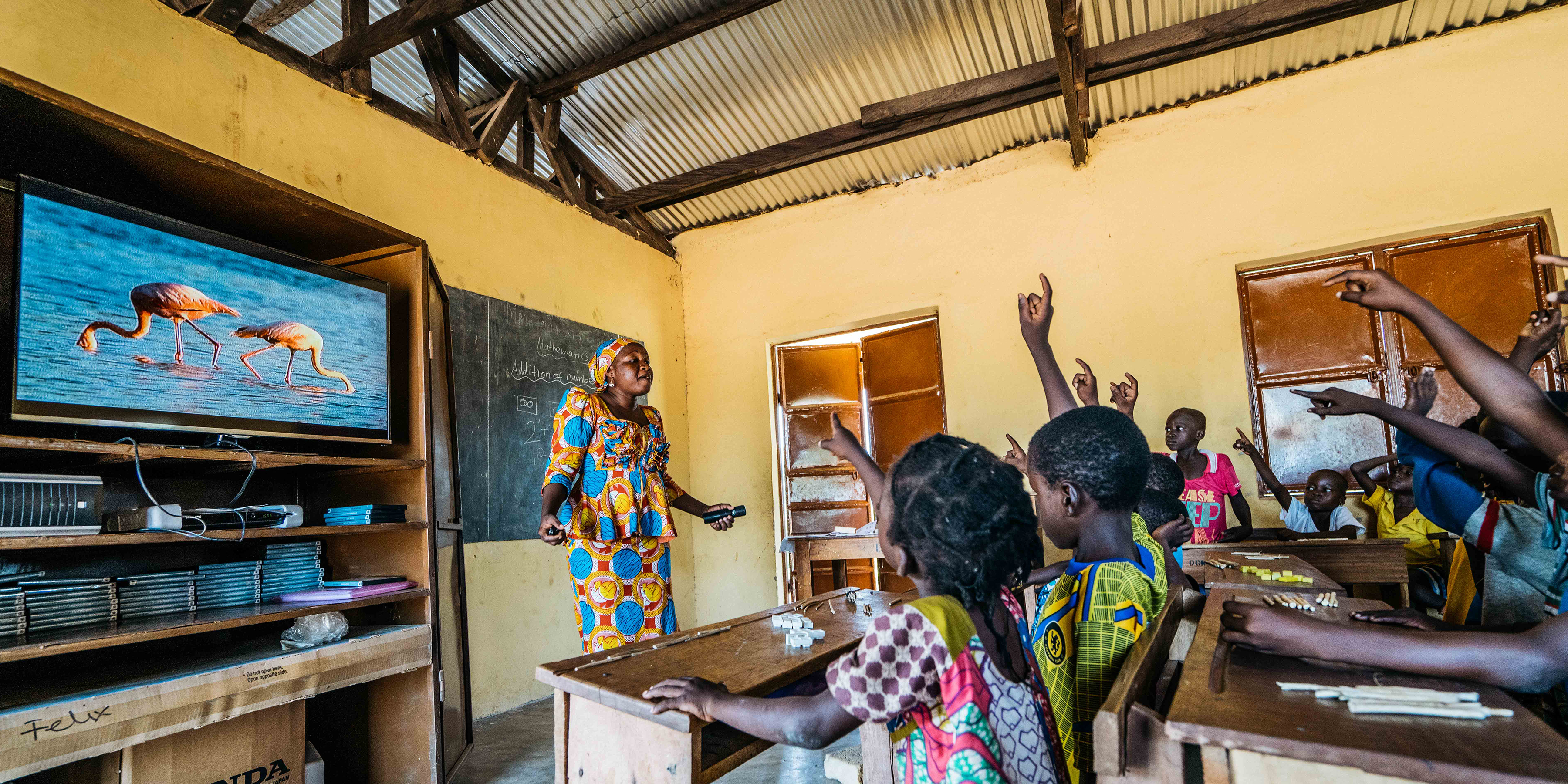Project Overview
MCC’s $536 million Ghana Compact (2007-2012) funded the $9.4 million Education Sub-Activity, which included the rehabilitation or construction of 221 schools in Ghana’s Afram, Northern, and Southern zones. The program was based on the theory that investments in education infrastructure would lead to improved school access, which would then lead to increased enrollment, attendance, and completion. Improved school outcomes would lead to poverty reduction through economic growth.Key Findings
Current School Conditions
- Four years after the end of the education sub-activity, MCC schools are in significantly better condition than non-MCC schools.
Maintenance
- Across all zones, neither MCC nor non-MCC schools have a practice of conducting routine or preventive maintenance on infrastructure.
- Lack of maintenance funding and community buy-in are key barriers to maintenance.
Other Factors Affecting School Conditions
- Parent-teacher associations (PTAs) in high-scoring MCC and non-MCC schools were more proactive at addressing maintenance needs, compared to those in low-scoring MCC schools.
Perceived Learning Outcomes
- Respondents from both MCC and non-MCC schools across all zones felt that investment in school infrastructure had a positive effect on enrollment, attendance, completion, and learning.
Evaluation Questions
The final performance evaluation was designed to answer the following questions:- 1 What are the current conditions of MCC investments made for the education sub-activity? How do the conditions of MCC investments compare to non-MCC sites?
- 2 How did the implementation process and/or post-completion maintenance contribute to current conditions of MCC investments?
- 3 What other factors explain both perceived school-level outcomes and the current conditions of schools?
- 4 What are the perceived outcomes of the investments in school infrastructure?
Detailed Findings
Current School Conditions
MCC schools scored significantly higher than non-MCC schools in all regions four years after the compact ended.
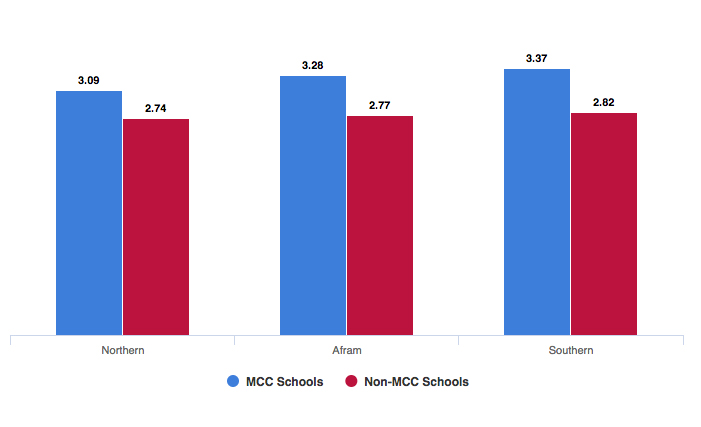
MCC schools scored an average of 3.24 out of 4 on overall school condition, compared to 2.78 for non-MCC schools—a statistically significant difference indicating MCC schools overall were in better condition four years after the Compact ended. However, there were also differences in school conditions detected across the three zones, with MCC schools in the relatively affluent Southern and Afram zones scoring significantly higher than MCC schools in the Northern zone, where poverty rates are higher.
Maintenance
Maintenance is a critical contributor to post-project conditions, and maintenance practices differed greatly between high- and low-scoring schools. The majority of both MCC and non-MCC school respondents reported that school maintenance is only conducted when requested by the school. Only 11.3% of MCC and 11.5% of non-MCC respondents noted that school maintenance is done regularly. Lack of maintenance funding was most frequently mentioned by school respondents as a barrier to good maintenance, followed by lack of community support for maintenance. These issues were more often reported at low-scoring MCC and high-scoring non-MCC schools than at high-scoring MCC schools.Other Factors Affecting School Conditions
The steps that communities had taken to address maintenance issues varied. Whereas respondents from low-scoring MCC schools proposed solutions for the government to implement, those from high-scoring MCC and non-MCC schools spoke about what their own communities had done. This included PTAs raising funds to renovate school windows and doors and hire a security guard for their school.
Perceived Learning Outcomes
Based on interviews with stakeholders, the perception at both MCC and non-MCC schools across all zones was that improvements in school infrastructure positively affected school enrollment, attendance, completion, and learning.While non-MCC schools did not receive infrastructure support from MCC, over 40.0% of non-MCC and 28.5% of MCC schools reported receiving infrastructure support from other sources since 2012, which allowed them to comment on its perceived impact. Most respondents across all schools also thought the quality of teaching and learning at their school had improved over the last three years, indicating an overall perception that outcomes have improved.
Economic Rate of Return
- 11.4% Original Estimate
- 9.1 – 11.0% Evaluation-Based Estimate
MCC Learning
- A long-term maintenance strategy should be central in the design of any school infrastructure investment in Ghana.
- During implementation, construction quality suffered as a result of poor monitoring. MCC now limits the locations for school construction so that better monitoring can take place.
Evaluation Methods
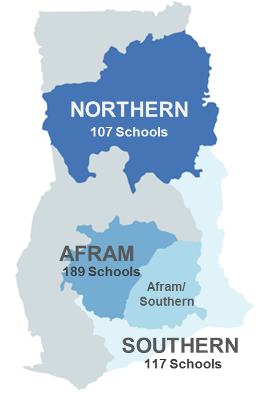
School Conditions Survey: SI conducted a survey to assess all 221 MCC schools and 192 non-MCC schools. Data collection took place in 2016, giving a 7-9 year exposure period for MCC-funded infrastructure. Surveyers photographed and rated schools between 1 (poor) and 4 (good) using four survey components (shown below) and 39 subcomponents. The photos depict poor (top) and good (bottom) examples.
| Toilet Facilities and Polytanks | Equipment and Other Items | Classroom Block Conditions | School Grounds |
|---|---|---|---|
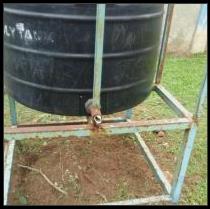 Polytank is not functional (spout not connected) |
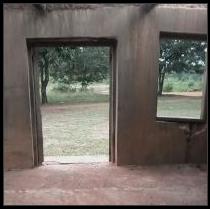 Windows are missing and no furniture in places |
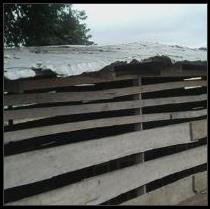 Roof is in poor conditions with visible holes |
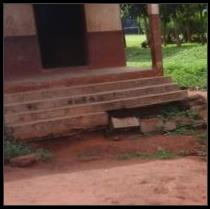 Extensive soil erosion around structure |
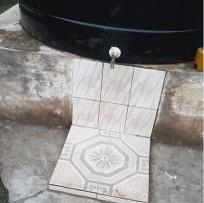 Polytank is fully functional |
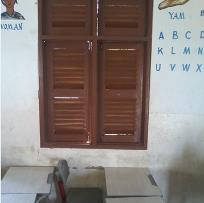 Windows are functional and furniture in place |
 Roof is in good condition with no visible holes |
 No evidence of soil erosion around structure |
2018-002-2193-01


